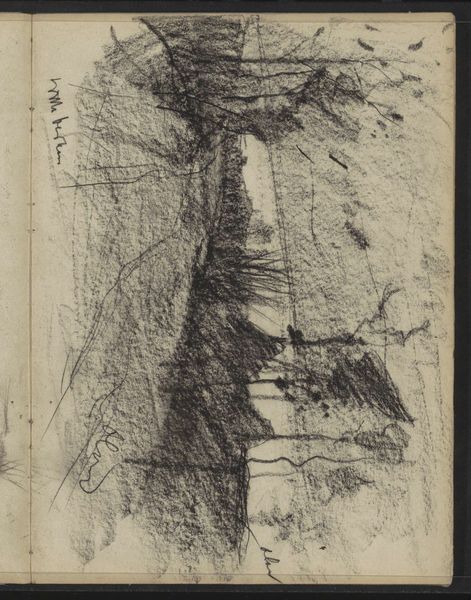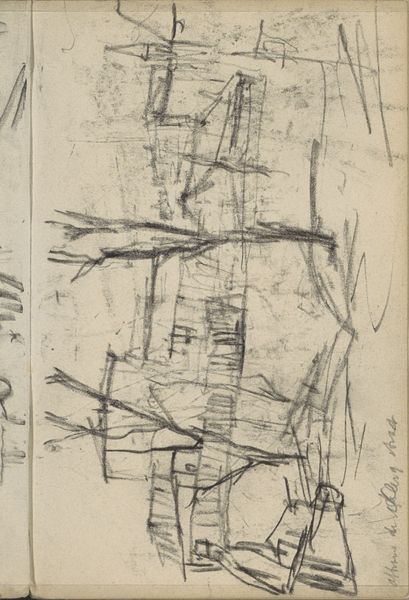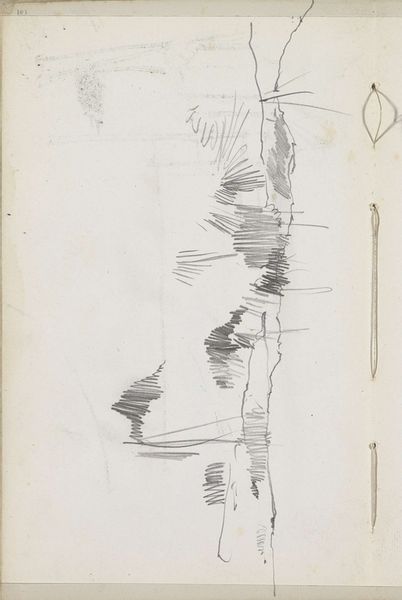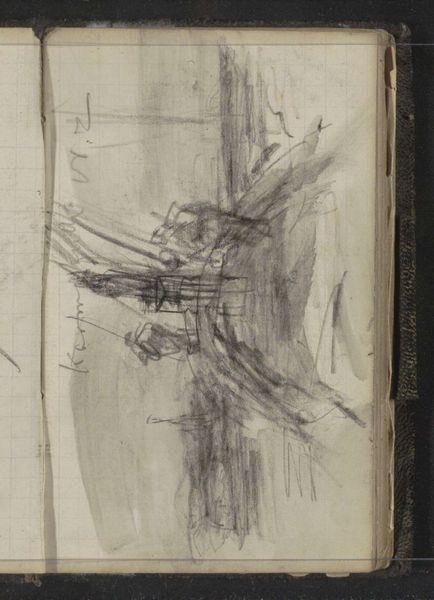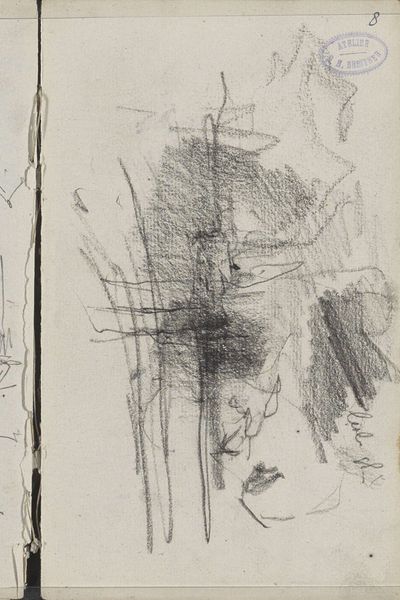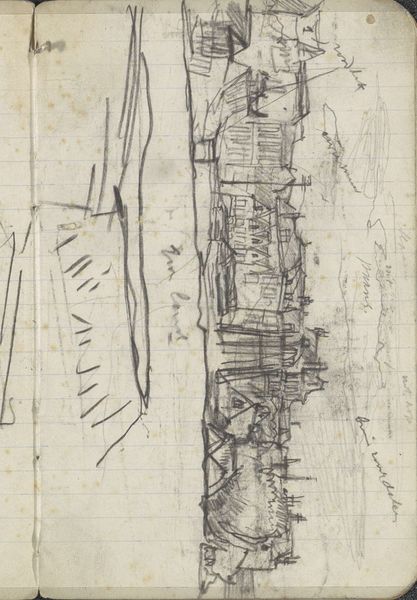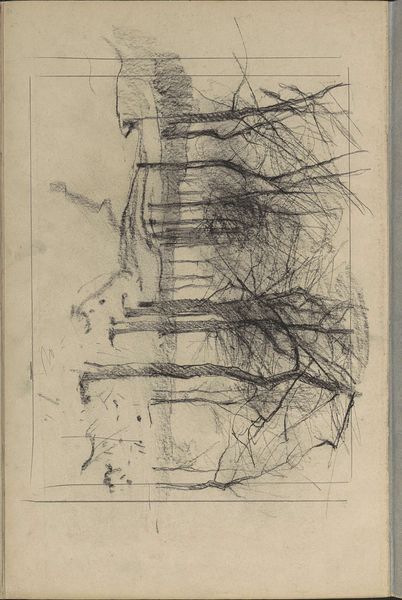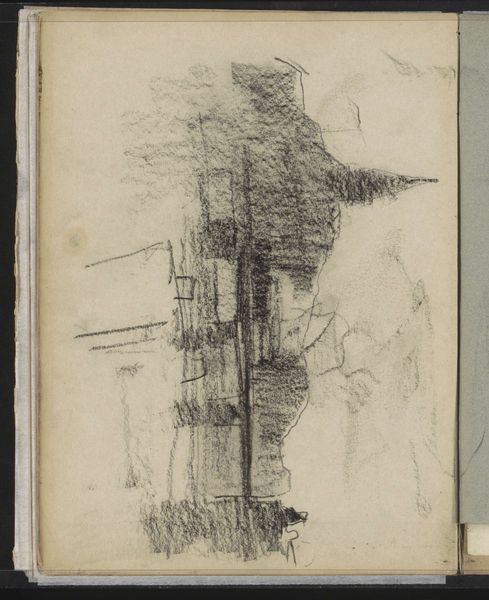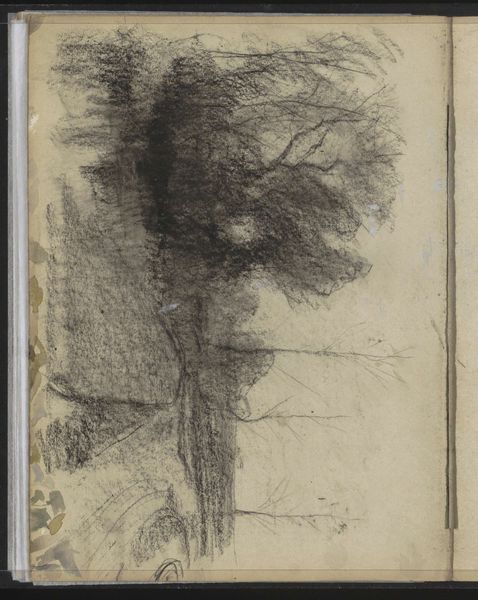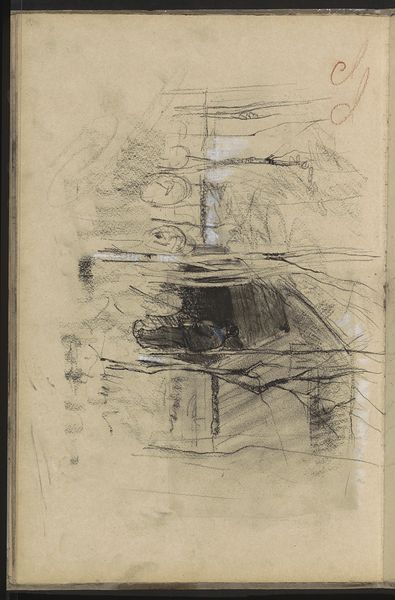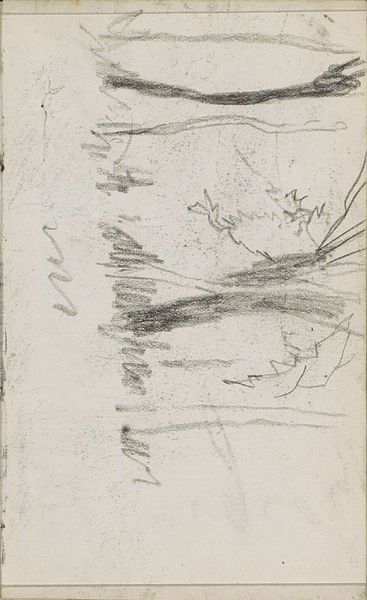
drawing, graphite
#
drawing
#
impressionism
#
landscape
#
form
#
line
#
graphite
Copyright: Rijks Museum: Open Domain
Curator: This is “Rijtuigen op straat, mogelijk in Londen,” which translates to "Carriages in the street, possibly in London", a graphite drawing made by Willem Witsen sometime between 1888 and 1891. It’s currently held here at the Rijksmuseum. Editor: My immediate impression is of fragmented memories. A rapid capturing of forms. There is very little depth here. Curator: The way the artist uses lines and shapes does suggest the quickness of impression. One could read that in terms of the rise of industrialism. A focus on immediate experience. The experience of a city moving faster. Editor: Indeed. This "faster" urban experience is visualized through very interesting symbology, which does convey a feeling of rapid social transformation, yet feels very isolating and alienating. What do you make of that, in the London context? Curator: It certainly suggests a critique of modernity. The lack of distinct features on any of these figures is something that contributes to my alienation reading of the scene. I wonder if the artist intends these figures to feel universal, not representing individual personalities? Editor: Right. It begs the question – why carriages? Carriages carry baggage in terms of class connotations. So there's an interesting dialectic between movement and structure, between class-based identity and maybe more abstracted visual form, through these impressions of modernizing forms. Curator: The use of graphite in this case amplifies that abstraction for me. Witsen refrains from painting in full colour. I think there is value in the ways this keeps us grounded, even despite the feeling of things happening faster than ever before. What does it tell us that all this industrial expansion still relies on, depends on this older form, these horse drawn carriages? Editor: Yes. He gives that very subtle commentary through form and through suggestion. What I like about his approach is that nothing here is spelled out directly; the artist leaves room for thought. And this keeps drawing our interest, doesn't it? Curator: Exactly! There is much food for thought contained within, when you simply consider the history of this particular artist at the time. Thank you for walking with me. Editor: Thanks, fascinating discussion.
Comments
No comments
Be the first to comment and join the conversation on the ultimate creative platform.
